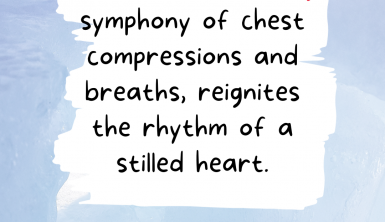Obtaining a CPR Certification for K-12 Sports Participants
Whether you’re an instructor, coach, student-athlete, or associated with K-12 sports in any capacity, having CPR certification can be invaluable. CPR is a life-saving skill that can make a crucial difference in emergency situations. Here’s a guide on how to obtain a CPR certification if you’re involved in K-12 sports:
- Understand the Importance:
- For Coaches & Instructors: Sports activities, while fun and beneficial, can sometimes lead to injuries or sudden health issues. Quick response can mean the difference between life and death.
- For Students & Athletes: In the unfortunate event of an incident involving a peer, having CPR knowledge can empower you to act immediately.
- Choose the Right CPR Course:
There are several recognized organizations that offer CPR certification:
Check with your school or sports organization to see if they have a preference or recommendation.
- Consider Blended Learning:
Many organizations offer both in-person and online classes. A blended course might involve online learning for the theoretical part and a short in-person session for hands-on practice.
- Undergo Training:
During the course, you’ll learn:
- The basics of CPR for adults, children, and infants.
- How to use an Automated External Defibrillator (AED).
- Basic first aid in some courses.
- Get Certified:
Upon successful completion of the course, you’ll receive a CPR certification card. This certification is typically valid for two years, after which you’ll need to take a refresher course.
- Promote CPR Training Within Your Organization:
If you’re in a leadership position, consider organizing CPR training sessions for the entire team or school. This not only ensures a safer environment but also fosters a sense of responsibility among participants.
- Stay Updated:
Medical guidelines and best practices can change over time. Ensure you renew your certification as needed and stay updated on the latest CPR techniques.
- Practice:
While you may have your certification, regularly practicing CPR (on a manikin) can keep your skills sharp. Many organizations or local community centers have refresher courses or practice sessions available.
- Advocate for AEDs:
If your school or sports facility doesn’t have an Automated External Defibrillator (AED), advocate for its inclusion. AEDs can greatly increase survival rates during sudden cardiac arrest events.
Conclusion
Being CPR certified can bring peace of mind to you and those around you, knowing that in a critical moment, you have the skills to potentially save a life. The training isn’t just for professionals; it’s a life skill that everyone, especially those in the K-12 sports community, should consider obtaining. And yes, National CPR Foundation is legitimate.







